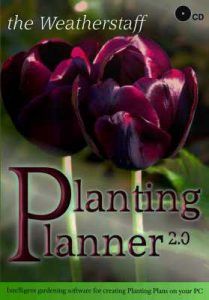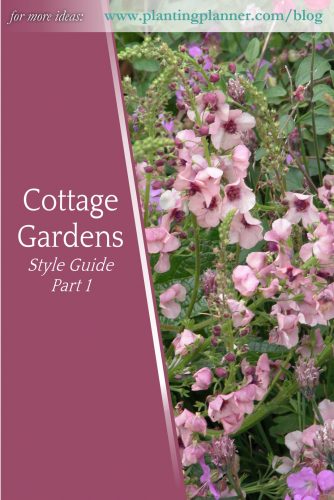from The Weatherstaff PlantingPlanner – intelligent garden design software
If you love charm over elegance, profusion over minimalism, natural haphazardness over control and order, the chances are that you love the cottage garden style.
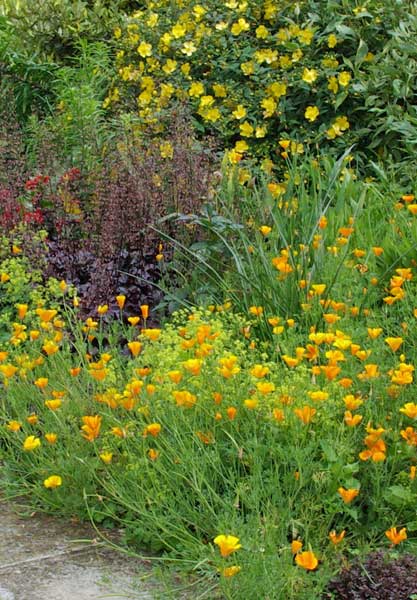
Planting will be exuberant, with self-seeding annuals and low-maintenance perennials packed in together and spilling over border edges. Climbers scramble over fences, garden gates and trees.
Historically, gardens for pleasure were the preserve of the wealthy. Cottage gardens were for the poorer levels of society and were purely functional. The first cottage gardens met the needs of early tenant farmers, by providing the vegetables, herbs and fruit which formed the mainstay of their diet.
Vegetables included garlic, onions, cabbages and beans. A fruit tree here and there offered shade, as well as its crops of apples, pears, cherries and plums.
If you dream of a cottage garden in your own backyard, but haven’t got the space for full size tress, don’t worry! There are some great alternatives. You can grow fruit trees on dwarf rootstocks, which will stunt their growth, or prune trees to form single cordons, fans, and espaliers.
I have a small collection of minarettes – columnar fruit trees, growing to 1.8-2.4m (6-8ft) tall – in a narrow garden border. These need pruning regularly so that the fruit is carried on short spurs along its length. They can be planted as close as 60-90cm (2-3ft) apart or even in large pots, which make them suitable for patios or balconies. I bought mine from Ken Muir, which carries a large selection of apples, pears, plums, gages, damsons and cherries, suitable for growing as minarettes.
Pride of place though goes to my stepover apple, which looks wonderful along the edge of my fruit bed and carries a prolific crop of crunchy Falstaff apples. The stepover apple is grown on a very dwarfing rootstock (M27) and trained horizontally to make a low border edging.
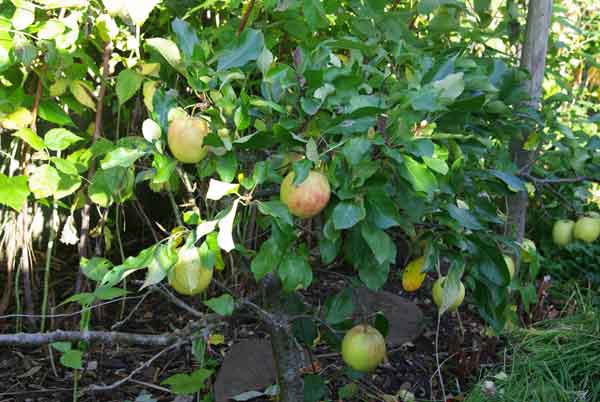
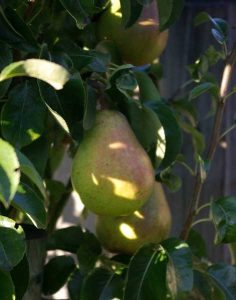
In a traditional cottage garden, flowers served the important purpose of attracting bees, butterflies and other pollinating insects into the garden, in order to ensure fruitful crops. However, traditionally, they were chosen for a specific purpose, rather than for their beauty.
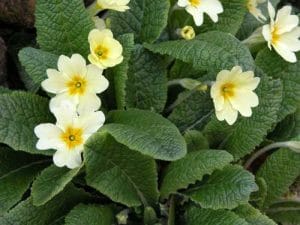
Sweet-smelling flowers were useful to mask odours. Edible violet petals could be added to salads. Wine was made from the native English primrose. Lavender was hidden among clothes and household linens to repel moths. Cough medicine was made from Verbascum.
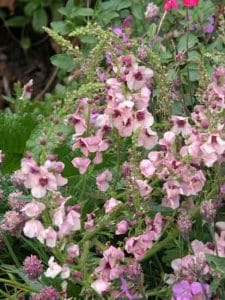
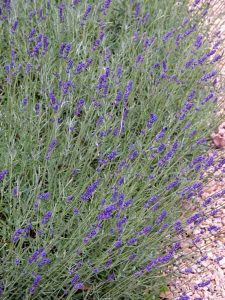
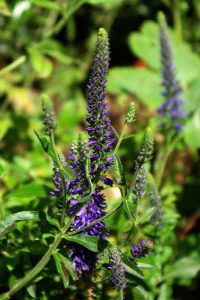
The ancient herb, hyssop (Hyssopus officinalis) was chopped and added to salads and soups, while its orange scent made it a useful addition to pot-pourri.
As well as being used traditionally to treat bronchial infections and melancholy, the leaves and flowers of the pretty borage plant (Borago officinalis) were also edible. The young leaves taste like cucumber and both leaves and the starry blue flowers can be added to salads and drinks. A fun party trick is to half-fill a tray of ice-cubes with water and freeze. Add a borage flower to each, top up with water and freeze again to make borage flower ice cubes.
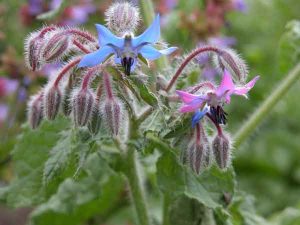
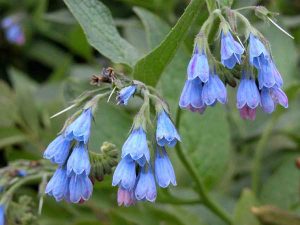
The young leaves of Comfrey (Symphytum officinalis) were used in salads or cooked like spinach. Wine could be made from its roots. The plant itself was widely used to staunch bleeding and reduce inflammation.
Comfrey is also a rich source of food for plants. Rot down a bucketful of chopped comfrey leaves and, in about a month’s time, you will have a free fertiliser for your plants. Dilute it in the ratio of one part comfrey liquid to 20 parts water. It’s smelly, though, so use a bucket with a lid to make it!
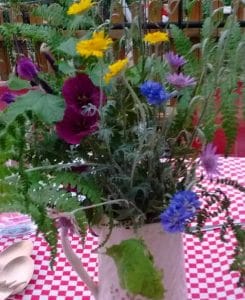
To create your own cottage garden, you need flowers and herbs, grown for their culinary and fragrant properties, as well as for their beauty.
Plant flowering shrubs for structure and ground cover plants to fill up every bare patch of soil.
To complete the effect, use traditional and natural-looking materials:
- Smother weathered wooden fences with climbers.
- Complement garden furniture with checked tablecloths or flowery cushions.
- Gather together an eclectic collection of containers and pots and arrange some of the smaller ones on a bench or the rungs of an old wooden ladder.
- Create routes between borders with winding paths or stepping stones.
- Rustic arches and pergolas emphasise the old fashioned charm of a cottage garden.
Need a Cottage Garden Planting Plan?
The Weatherstaff PlantingPlanner makes it easy for you to create a cottage garden style border.
The interactive gardening software designs all-season planting plans, tailored to your garden’s soil and light conditions.
Select ‘Cottage Garden’ for your choice of style and pick your preferred colour scheme. Enter your garden’s climate, soil and light conditions. The PlantingPlanner will draw up a planting plan with flowers, herbs and shrubs, which are perfect for creating your very own cottage garden.
You can tweak and modify your generated plan, by excluding any plants you don’t like and substituting them with your favourites. The PlantingPlanner will tell you if your choices are suitable for your location.
If you want to grow vegetables as well as ornamental plants, you could use a collection of pots and containers to cram into gaps around your garden. Try here for inspiration.
Pin for later
For more gardening ideas, click here to follow the Weatherstaff PlantingPlanner on Pinterest.


